
That Nobody Talks About
 |
The Kilimanjaro Summit Sign That Nobody Talks About |
Climbing Mount Kilimanjaro is quite difficult; so those who make it to
the top understandably like to have memorable pictorial records of their
achievements. The standard photo-op is a group shot in front of
the iconic summit signpost. This was the original structure:
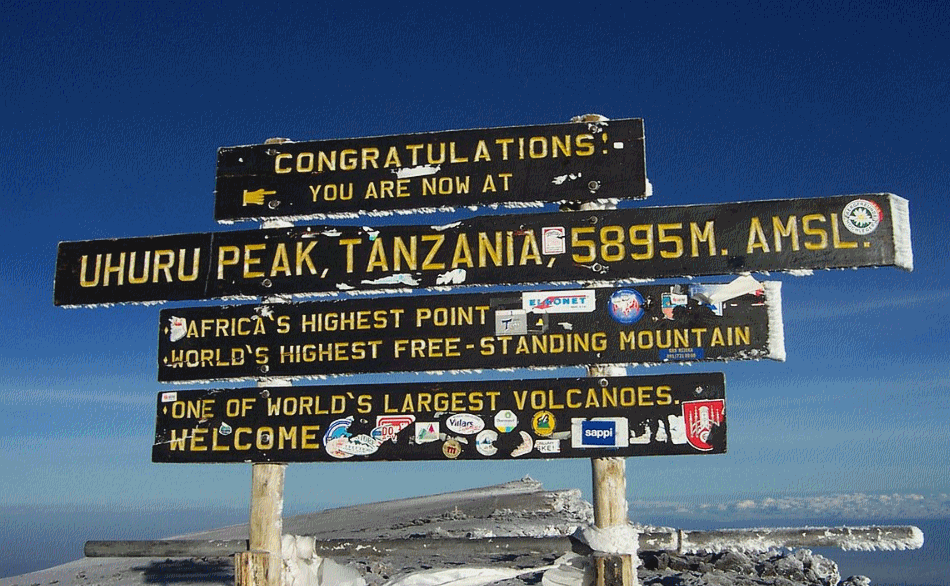
Although at least one blogger maintains that this is the most frequently photographed sign in Africa, that is wildly unlikely to be true by sheer dint of numbers. This sign, however certainly does seem to be the most beloved and most frequently published one.
Oddly enough, what does not appear to have been mentioned elsewhere
is the fact that, by 2010, the bottom-most portion of the sign
had gone missing.
In 2012, the poor thing was replaced by a new and 'improved' model.
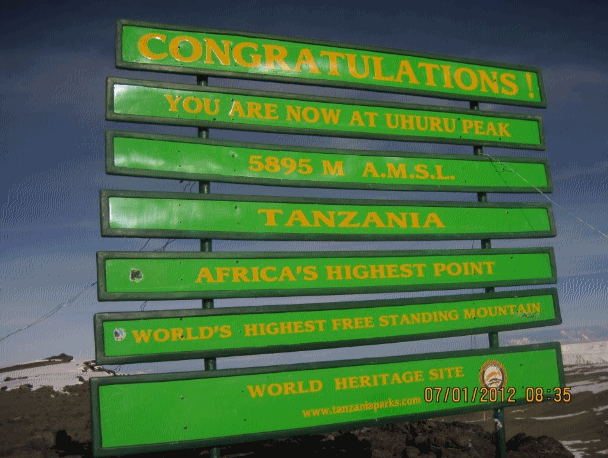
The Green Monster
That offering was not well-received, however. Although it was made of a synthetic material that doubtless was more durable than the old wooden construction, the color choices proved unpopular, the text reportedly was difficult to read in sunlight, and it lacked character. Also not mentioned elsewhere is the fact that the original message about a volcano remained absent.
So many complaints were registered that the Tanzanian officials
capitulated, and in 2014 the so-called New Old-Sign
was erected. It closely resembled the original one, even to the
extent of retaining the crooked board in the middle that provided much of
the vaunted character.
Here is a summit-shot of hiker-friend Cindy, whom I helped to prepare for the mission, with her son Andy (both on the far left):
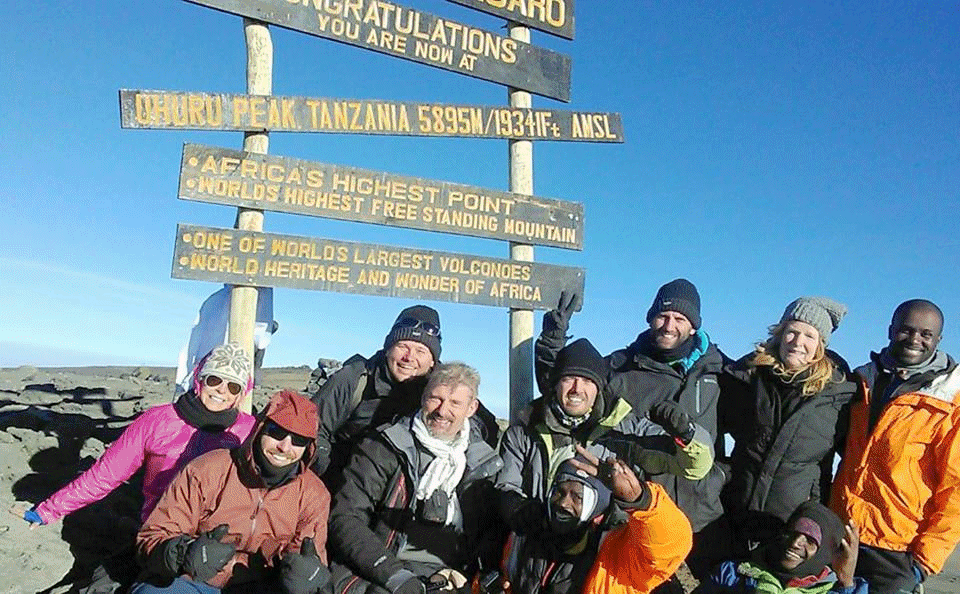
At the New Old-Sign in September, 2015
Now everyone is happy, right? WRONG! Look at that sign again:
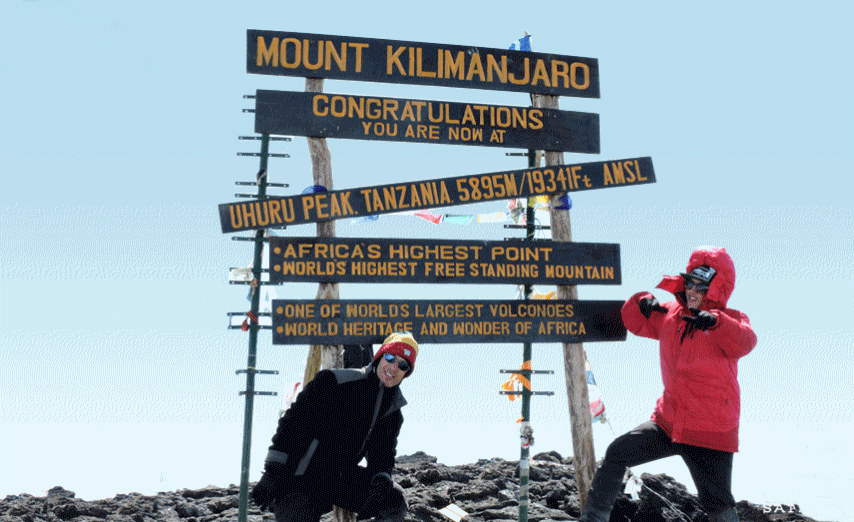
The 2014 version is a joke
The word VOLCANOES has been misspelled! On top of that, two
new grammatical errors have been introduced. The hyphen is missing
from FREE-STANDING MOUNTAIN, leaving that phrase nonsensical.
A mountain might be standing, but the political designation "free" is
inapplicable to a piece of dirt and rock. Also, the apostrophe is
missing from WORLD'S LARGEST. Go figure.
The term FREE-STANDING also was mis-handled on the former green sign; but at least on that one, the apostrophes weren't slanted backwards as on the others.
AND NOW, THE REST OF THE STORY
Apparently without fanfare or other publicity (and possibly to avoid
some agency embarrassment), sometime in late 2015 the summit sign was
replaced again. Lo and behold, the three aforementioned errors
have been corrected! Even the three apostrophes are sensibly
shaped. See for yourself:
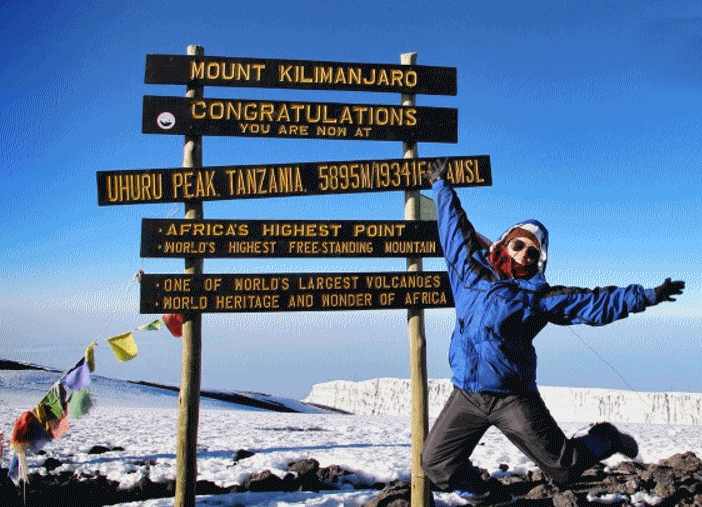
THE SIGN THAT NOBODY TALKS ABOUT
Perhaps the most amazing fact of all is that no other online
article that I could find makes the slightest mention of either
the wording errors or the fact of a third replacement of
the original signpost. The one in place now is not the
New Old-Sign of 2014, but the
Corrected New-Old-Sign of 2015.
And you heard it here first — at Ted's World.
For the record, I have intended no criticism of the Kilimanjaro
National Park officials for those mistakes; indeed, they seem ultimately to
have tried to do the right thing by finally enlisting the services of a
semi-competent English-speaking person.
I say semi-competent, though, because there remain some uncorrected
grammatical anomalies. Admittedly, fixing them would cause some of the
original wording to be changed; and although it wouldn't have hurt anything,
maybe they didn't want that.
The powers that be are to blame, however, for perpetuating the
error in the 1952 survey that estimated a summit elevation of
19,341 feet. Modern measurements place the mountain's height at
19,318 feet.
Bad English is one thing, but faulty data is quite another. Perhaps you heard that here first, as well.